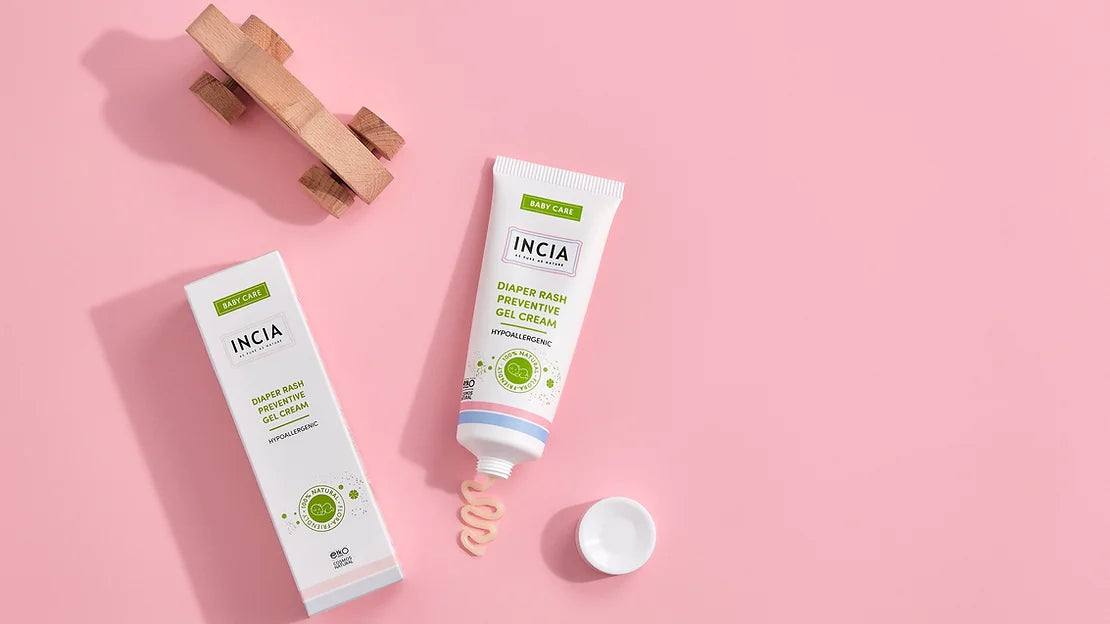Diaper rash is a common skin issue in babies. The areas affected by diaper rash can cause discomfort and make your baby restless. To prevent this, there are various solutions available.
Why does diaper rash occur? Diaper rash is often seen in areas where the skin comes into contact with the diaper. Diaper rash is typically bright red and is usually caused by the diaper or another ingredient coming into contact with the baby's skin. The conditions that can cause diaper rash are as follows:
1. Irritation from diaper contents:
Prolonged exposure to urine or stool in the diaper can irritate the baby's sensitive skin. Especially during periods when the baby has diarrhea, the extent of this irritation can increase, making the baby more susceptible to diaper rash.
2. Friction:
Using tight diapers based on the baby's weight or dressing the baby in very tight clothing can also cause diaper or skin rash.
3. Irritation from a new product:
When the brand of the diaper or moist (diaper) wipes is changed, the baby's skin might react to it. Additionally, laundry detergents and chemical lotions applied to the baby's skin can also lead to diaper rash.
4. Infection:
Areas covered by the diaper typically have a warm and moist environment, creating an ideal setting for the spread of microorganisms such as bacteria and fungi. The diaper-covered area can start as a simple skin infection, but it can also quickly spread to surrounding tissues.
5. Introducing new foods:
As the baby gradually transitions to solid foods, this can alter the content of their stool, increasing the risk of diaper rash. In breastfeeding babies, certain foods consumed by the mother can also cause diaper rash in the baby.
6. Sensitive skin:
Babies with skin issues like atopic eczema and seborrheic eczema are more prone to diaper rash.
7. Use of antibiotics:
Antibiotics kill both beneficial and disease-causing bacteria in the body. Some types of bacteria that are usually present on the skin help protect against infections by inhibiting fungal growth. The use of antibiotics can disrupt these beneficial bacteria, leading to fungal infections in the baby's diaper area. Additionally, antibiotic use can cause diarrhea, increasing the risk of diaper rash.
What are the preventive methods to avoid diaper rash? One of the most important things to do to prevent diaper rash is to keep the baby's bottom clean and dry. Other methods to prevent diaper rash include:
- Changing the diaper regularly
- Washing the baby's buttocks with lukewarm water during diaper changes
- Gently drying the baby's buttocks
- Avoiding small diapers that don't allow air circulation for the baby's bottom and using the correct diaper size (based on the baby's weight)
- Allowing the baby to go without a diaper for as long as possible to naturally dry the baby's buttocks.
Preventive and Natural Diaper Rash Gel by INCIA One of the effective ways to prevent diaper rash is by using a preventive and natural diaper rash gel. However, not every diaper rash gel is suitable for your baby's skin. INCIA's 100% natural preventive diaper rash gel contains no synthetic preservatives, alcohol, or other chemicals like fragrance that could be harmful to the baby's skin. The natural and preventive diaper rash gel from INCIA helps you take care of your baby's sensitive skin. This gel includes a variety of cold-pressed plant oils such as coconut oil, shea butter, and jojoba oil, which enhance the baby's skin resistance. This gel also contains 100% natural beeswax and creates a barrier between the baby's skin and irritating substances. All of this contributes to protecting the baby's skin from diaper rash without disrupting the skin's natural balance.
The gel is suitable for the tiniest ones and provides immediate relief for irritated skin. The INCIA's 100% natural preventive diaper rash gel spreads easily. Apply the gel in small amounts during diaper changes. Even a thin layer of this gel provides significant relief. Regular use prevents diaper rash, alleviates redness, and nurtures the skin. The gel is also highly suitable for aiding with scrapes and spots resulting from falls and bumps.

